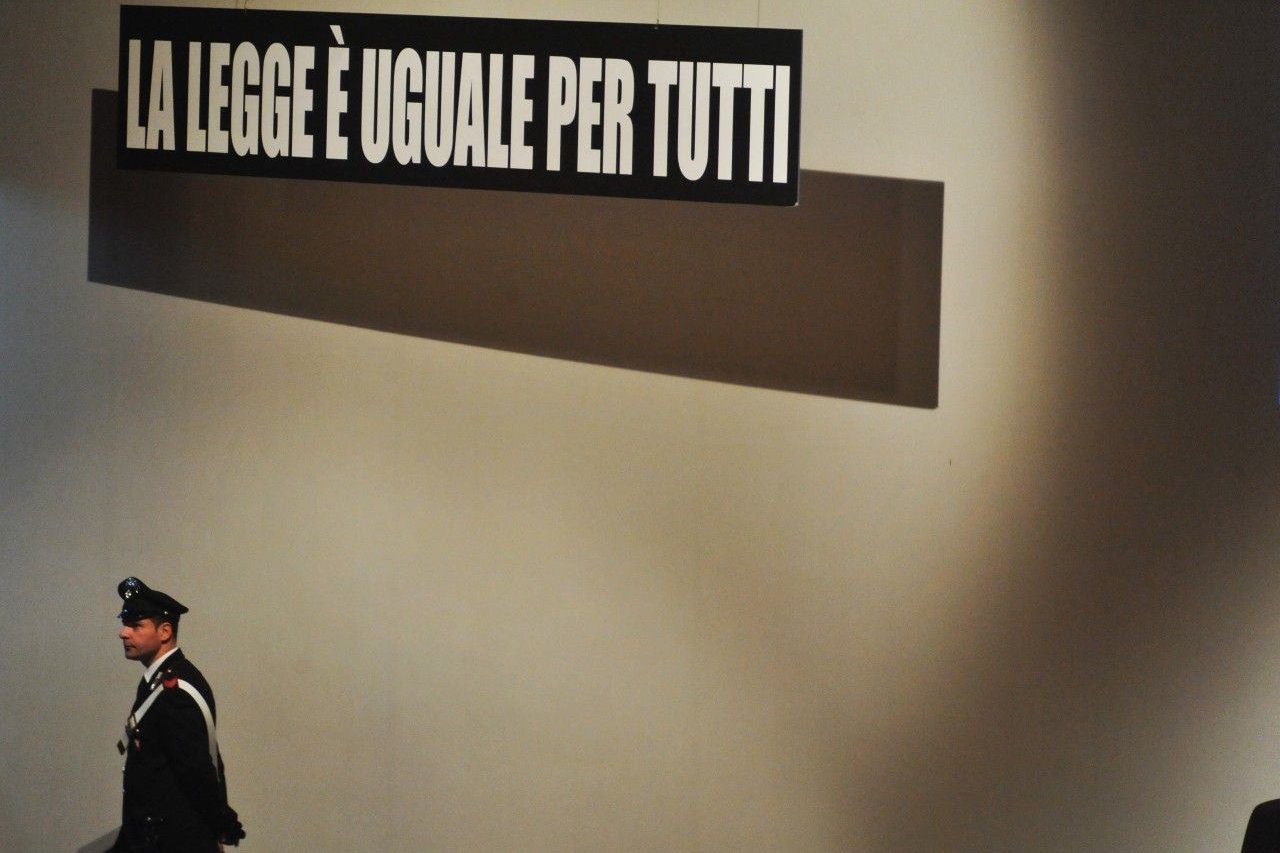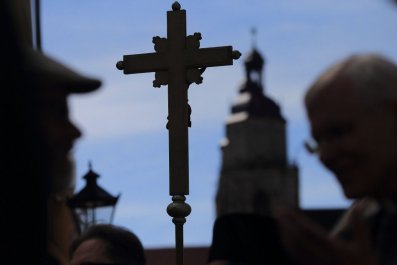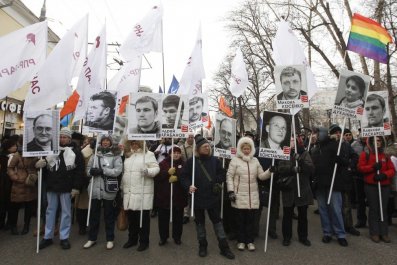The ways of Italian justice are infinite - in the sense that they're never-ending. And the case of Amanda Knox and Raffaele Sollecito is only the most famous - or maybe notorious - instance.
Then there's Guido Trevisan, a Venetian art dealer who died recently, nearly 103. Yet living so long wasn't long enough for him to get justice for a painting he bought at auction in 2001 but which a prominent Italian businessman, Claudio Cavazza, claimed robbers had stolen from his home two years earlier.
The old fellow never actually got his hands on the picture before it was seized by police and locked up shortly after the sale, then handed to Cavazza until the court proceedings were complete.
The case of the stolen painting triggered a lawsuit that has been going on for 12 years, despite the fact that both principals in the suit are now dead. The baton has been passed to their heirs and a final verdict has yet to be reached.
The case is reminiscent of Charles Dickens's interminable legal battle Jarndyce v. Jarndyce that forms the centerpiece of Bleak House. The fictional case has become synonymous among lawyers for a case that never ends, leaves the plaintiffs poor, but earns lawyers a fortune.
The picture in question, Allegoria (1925), is by futurist artist Mario Sironi. It depicts a stylized man in red with a white hammer suspended above him ready to strike down upon his head. Trevisan bought it for about $23,000. Today it's estimated it would fetch between $27,000 and $32,000.
Trevisan was a friend of Sironi, one of the leading lights of Fascist art, and he always enjoyed a curious nostalgia for the regime that he believed brought order to Italy.
I interviewed Trevisan in Venice at his canal-front apartment-museum overlooking the Rialto Bridge, who said he intended to fight till the bitter end to own the picture and had been praying God to support him. "Oh, I'll have that drawing, whatever it takes," he said.
In 2009, Trevisan won the first trial, but his opponent appealed the verdict. Trevisan responded by buying a full-page advertisement in a leading Italian newspaper and received thousands of letters in solidarity.
He was scared he wouldn't live long enough to attend the next hearing, initially set for this year. "Considering his age, we pressed to bring the case forward. The court accepted our request following the fuss triggered by the newspaper ad," said Simone Zancani, Trevisan's lawyer.
But it was Cavazza, not Trevisan, who died first, allowing Trevisan to gain custody of the picture pending a final verdict.
Last year, the Rome Appeals Court ruled once more in Trevisan's favor, but it was too late. The verdict was handed down a few months after he died.
"My client was happy," said Zancani. "He died with the painting hung on his bedroom wall, even if it was for such a short period of time and without [the case] reaching a final verdict."
The next tier of justice the case could reach is the Supreme Court of Cassation, Italy's court of last resort. So far the Cavazza's estate has not yet appealed to that court. After Trevisan's death, the picture returned to the custody of the court and will remain in a vault until a final decision is reached over which of his heirs should inherit it. The Cavazza estate's lawyer, who doesn't want to be named, says his clients consider "the case closed."
This is not the first time Trevisan found himself deep in the mire of the Italian legal system. He was a regular litigator who even waged war against Venice's ferry transport network when a new pier was built right in front of his house, blocking his view of the Redeemer Church.
According to Zancani, the trial could have ended long ago, or rather, it should never have started: "Usually, the police check all auction catalogues beforehand to see if there are any stolen works. In 2001 they failed to do that."
Italians are accustomed to snail-like legal proceedings. The European Court of Human Rights has repeatedly fined Italy millions of euros for the excessive length of its trials.
The delays are caused by a lack of judges, bureaucracy, contradictory verdicts and complex rules and procedures that can be easily manipulated by lawyers. There is also a high-tech deficiency in courts, where computers go missing and documents get lost. Some court officials still use MS-DOS.
And there are far too many Italian lawyers: more than 250,000, the highest number in any European country, according to the Italian lawyers' association. But do lawyers benefit from lengthy trials? Do they exploit the delays?
"It's not true that a pending case is a profitable case," said Markus Wiget, a top Milan lawyer. "Actually, it's pretty bad for a colleague, as he has to go back and restudy it every three months or so."
"Lawyers are like doctors. There are good ones and bad ones. Some work efficiently and therefore earn more money. Others slow down proceedings and flood courts with useless, petty complaints," he said. "Milan's tribunal receives about 1,200 cases per day. Add bad lawyers to bad judges who don't fully do their job, and it's obvious why the system goes haywire."
Lawyers also benefit from Italy's short statute of limitations. "Hundreds of thousands of trials expire each year," said Gino Scaccia, professor of constitutional law at Rome's LUISS University. "If the statute of limitations were lifted, lawyers would certainly speed up."
Another aspect that benefits lawyers is the lack of "filters" among the three degrees of judgment before a judgment is final. Anyone accused of any kind of offense, even a petty one, can appeal all the way to the Supreme Court of Cassation.
"We've got one of the highest litigation rates in the world and unscrupulous lawyers tend to exploit this mechanism," said Scaccia.
The final paradox? Italy's government has passed a law that compensates victims who have suffered from an "unreasonable" trial length - defined as more than six years. Often, however, courts expected to rule over the compensation take years to do so.
"This triggers a crazy situation where many Italians end up filing new lawsuits for additional compensation because of the delayed compensation, which costs the Italian state millions of euros every year," said Scaccia.
As Dickens wrote more than 150 years ago of the Jarndyce v. Jarndyce proceedings, courts and judges rarely have to account for themselves: "The empty court is locked up. If all the injustice it has committed, and all the misery it has caused, could only be locked up with it, and the whole burnt away in a great funeral pyre, why so much the better."


























